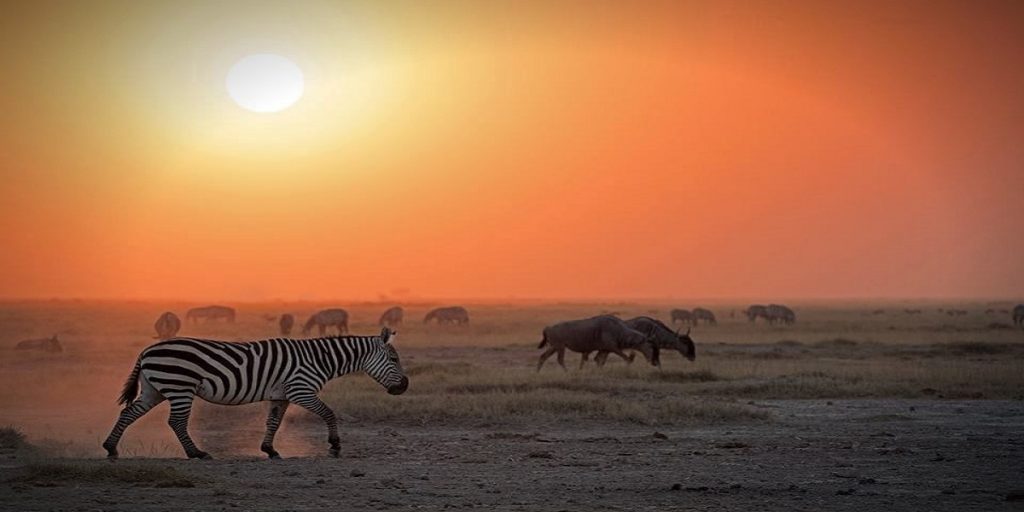
Wildebeest migration safari 2018/2019 offers
Wildebeest migration Safari like no other. Experience the most spectacular natural event in the world. Over a million wildebeest, accompanied by antelopes and zebras migrate from the Serengeti to Masai Mara eco system and vice versa. This annual phenomenon event gives you spectacular view of the courting, mating and birthing of the wildebeest as well as other herbivores as they take a torturous journey in two different countries covering over thousands of Kilometers.
When is the Best time to witness the migration?
Timing the migration safari is key for any traveler looking forward to this experience. If your timing is wrong, you might end up gazing at a few resident wildebeest and zebras in the plains of Masai Mara and Serengeti which might leave you disappointed. You need to know the exact place to go and when.
The migratory herds spread out on the southern Serengeti plains in massive numbers.
Based on historical data, this migration safari guide is not dependable – change in rainfall patterns make prediction time inexact. However, Jamboree Africa Tours and Safaris will give you an idea and keep you updated with information of the migrating herds based on our advice of our experts tracking the herds.
The Great Wildebeest Migration Trend
JANUARY:
Herds are seen in the Serengeti Tanzania. They move to the southern Serengeti, Ndutu area and Ngorongoro Conservation area. This is the calving season hence lots of wobbly babies are witnessed. Expects lots of predators as well.
FEBRUARY:
The herds remain in the far south due to the good grazing areas of the Southern Serengeti, Ndutu and Ngorongoro Conservation.
MARCH:
The herds are still in South. This is the place to be before the wildebeest prepare for the next chapter.
APRIL:
The herds start moving northward. You can find many of the wildebeest in the central as well as the western regions of the Serengeti.
The herds are followed closely by opportunistic predators to get that easy kill
MAY:
Herds are on the move! You can witness columns stretching up to 40 kms heading to the central and western Serengeti areas.
JUNE:
The herds head for the central and western areas of the Serengeti as they get ready for the toughest ever part of their odyssey.
JULY:
The real deal! Book early for the Big Event! The highlight of the migration is the river crossings. The herds have arrived at the western Serengeti and Grumeti Reserves. You’ll see the action of the famous wildebeest crossings in Grumeti & Mara Rivers which are infested with huge Nile crocodiles.
AUGUST:
For the lucky ones, they have another daunting obstacle of crossing the Mara River to the Kenyan side. You witness the crossing en masses.
The highlight: The crossing points in Grumeti & Mara Rivers during the months of July & August. This is the most dramatic aspect of the Migration.
SEPTEMBER:
Herds are divided in small groups as they discuss the ordeal of the crossing. Some remain in the Serengeti while others make it to Masai Mara in Kenya. They relax and enjoy for the moment but for the big cats, this is a blessing they have been patiently waiting for.
OCTOBER:
Masai Mara is the place to be. This is a far much smaller reserve compared to the vast Serengeti. But the small areas give you more than you can imagine. The big five, cultural tours in masai villages, having your meals inside the bushes, balloon safaris, you can enjoy it all.
NOVEMBER:
The beginning of short rains! This compels the wildebeest to leave the now bare grasslands of Masai Mara and get back to Serengeti where there is plenty.
DECEMBER:
A rejuvenated Serengeti! Wildebeest can be seen clustered in the north-eastern Serengeti – Lobo areas and southern Serengeti. This is the breeding season before starting the cycle once again.
Read the full story of the great migration.

